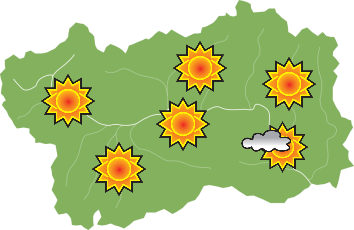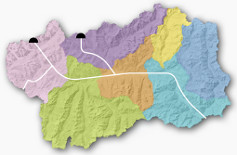- 15 Results
- Page 1 of 2
Avise Castle
Getting to Avise, the first building on the village’s left side, consisting in a three-storey construction with a square tower on its side is the Avise castle, built towards the end of the 15t…
Blonay Castle
Near the parish church, you cannot miss the castle complex, consisting of a square tower (12th century) and a more recent main building (15th century) with exquisite cross windows.
Th…
Saint Brice parish church
Situated in the chief town, the building was erected on the foundations of another older, low, irregular and small one, which was entirely demolished. According to tradition, the parish churc…
Fenêtre a La Salle village
The renovations of the entire village of Fenêtre a La Salle (2000) represents a singular architectural entity, based on the reinterpretation and renewal of rural architecture with the creation o…
Traditional architecture at La Salle
The municipal building (maison communale) is the starting point of a brief tour that leads to the discovery of some very interesting points of the local architecture.Extremely well restored by the…
Châtelard Castle
On the wide fan of La Salle, in the village of Château, stands Châtelard castle, built, according to the historian Jean-Baptiste De Tillier, by Rudolph Grossi, bishop of Aosta in 1243 an…
Ecours Castle
Located north of the municipal seat, on the road that goes up to the hill villages, this massive square tower is what remains of the 13th century’s fabric, together with a short section o…
Chapel of Ecours
Dedicated to the Nativity of the Virgin Mary, it is mentioned for the first time in a document dated 1330. The facade is completely frescoed with images of Saint Christopher holding the Infan…
Charvaz Chapel
Dated 1621, its facade (unfortunately in very poor condition) is completely frescoed with a representation of the Universal Judgement, it is dedicated to Saint Leonard – celebrated on the 6th o…
Saint Cassian parish church
The first documents relative to this church are the deeds of the pastoral visits of 1413 and 1416, but it may obviously be older than this. There are no remaining traces of the fifteenth centur…










